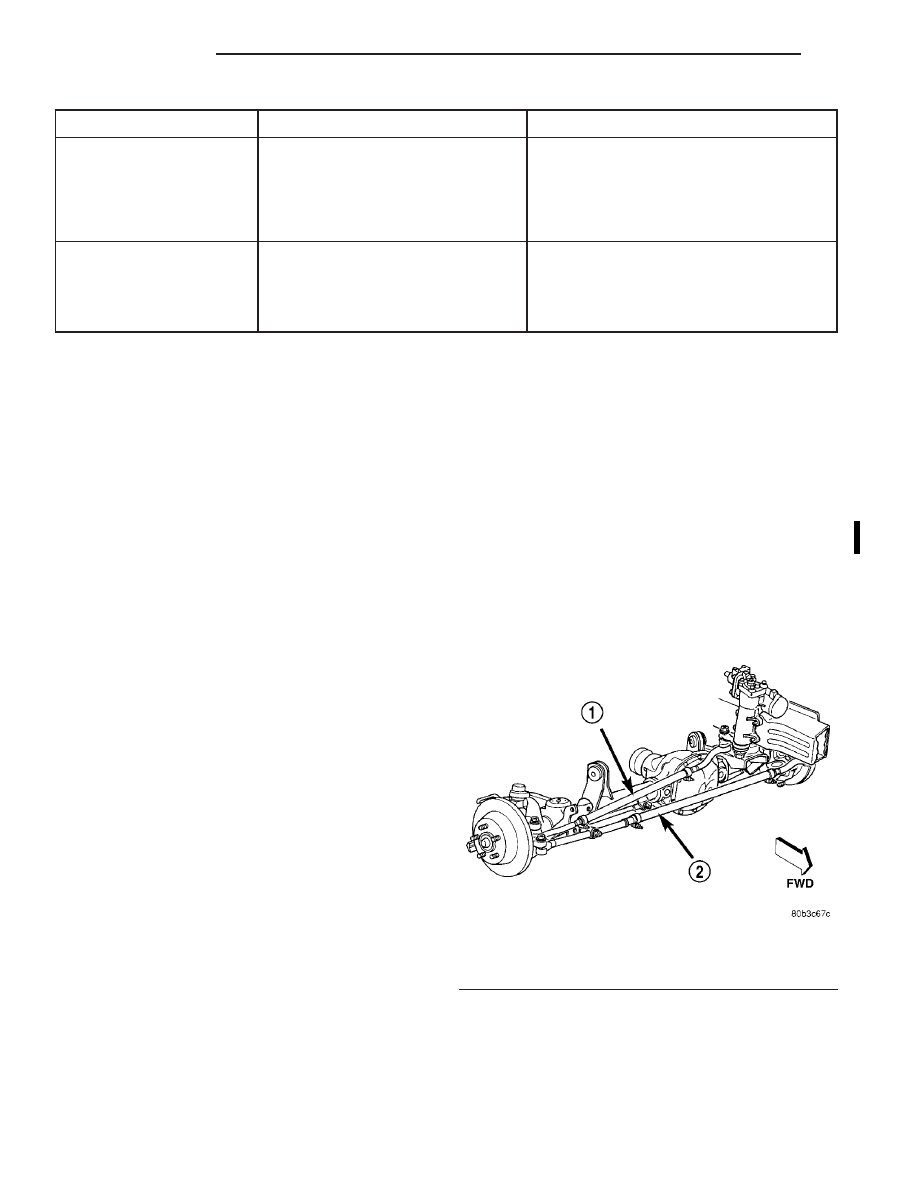Jeep Grand Cherokee WJ. Manual - part 9

CONDITION
POSSIBLE CAUSES
CORRECTION
KNOCKING, RATTLING
OR SQUEAKING
1. Worn shock bushings.
1. Replace shock.
2. Loose, worn or bent steering/
suspension components.
2. Inspect, tighten or replace components
as necessary.
3. Shock valve.
3. Replace shock.
IMPROPER TRACKING
1. Loose, worn or bent track bar.
1. Inspect, tighten or replace component as
necessary.
2. Loose, worn or bent steering/
suspension components.
2. Inspect, tighten or replace components
as necessary.
SERVICE PROCEDURES
PRE-ALIGNMENT
Before starting wheel alignment, the following
inspection and necessary corrections must be com-
pleted. Refer to Suspension and Steering System
Diagnosis Chart for additional information.
(1) Inspect tires for size and tread wear.
(2) Set tire air pressure.
(3) Inspect front wheel bearings for wear.
(4) Inspect front wheels for excessive radial or lat-
eral runout and balance.
(5) Inspect ball studs, linkage pivot points and
steering gear for looseness, roughness or binding.
(6) Inspect suspension components for wear and
noise.
(7) Road test the vehicle.
WHEEL ALIGNMENT
Before each alignment reading the vehicle should
be jounced (rear first, then front). Grasp each
bumper at the center and jounce the vehicle up and
down three times. Always release the bumper in the
down position.
To obtain an accurate alignment, a 4 wheel align-
ment machine must be used and the equipment cali-
bration verified.
CAMBER
The wheel camber angle is preset. This angle is not
adjustable and cannot be altered.
CASTER
The wheel caster angle is preset. This angle is not
adjustable and cannot be altered.
TOE POSITION
NOTE: For an accurate wheel toe position adjust-
ment the engine must be engine running.
(1) Apply parking brakes.
(2) Start the engine and turn wheels both ways
before straightening the steering wheel. Center and
secure the steering wheel.
(3) Loosen the tie rod adjustment sleeve clamp
bolts (Fig. 2).
(4) Turn the sleeve to obtain the preferred positive
TOE-IN specification. Position the clamp bolts as
shown (Fig. 2) for proper clearance.
(5) Tighten the clamp bolts to 68 N·m (50 ft. lbs.).
Tighten bolts with E-coated clamp and yellow tag to
41 N·m (30 ft. lbs.).
NOTE: Make sure the toe setting does not change
during clamp tightening.
(6) Verify alignment specifications, then turn the
engine off.
STEERING WHEEL CENTERING
NOTE: The steering wheel can be centered without
affecting the toe position.
(1) Loosen the drag link adjustment sleeve clamp
bolts.
Fig. 2 Steering Linkage
1 – DRAG LINK ADJUSTMENT SLEEVE
2 – TIE ROD ADJUSTMENT SLEEVE
2 - 4
SUSPENSION
WJ
DIAGNOSIS AND TESTING (Continued)
2000 Jeep Grand Cherokee
Publication No. 81-370-0047
TSB 26-10-99
October, 1999